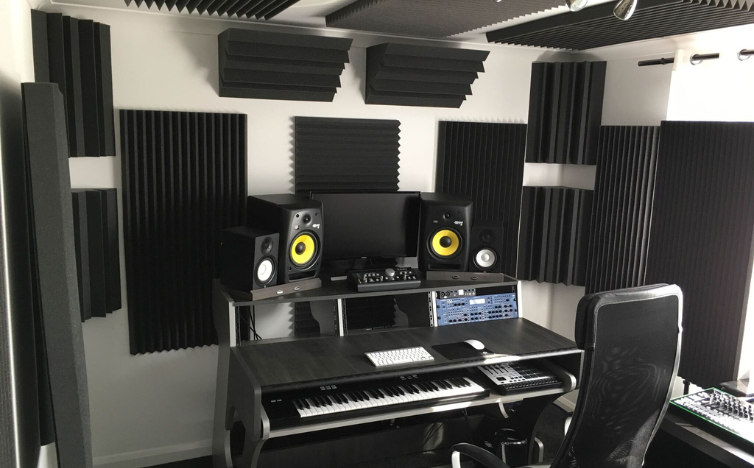Acoustic treatment is a critical element in recording studios, playing a pivotal role in achieving high-quality audio. Without proper treatment, even the most advanced equipment will struggle to capture sound accurately, leading to poor recordings. In this article, we’ll explore why acoustic treatment is essential and how it enhances the recording environment.
What is Acoustic Treatment?
Acoustic treatment for recording studios refers to the use of materials and techniques designed to control sound reflections, absorb unwanted noise, and reduce echoes in a space. Unlike soundproofing, which prevents sound from entering or leaving a room, acoustic treatment focuses on optimizing the sound within the room itself. This involves the use of panels, bass traps, diffusers, and other tools to manage how sound behaves in a studio.
Why Acoustic Treatment is Crucial for Recording Studios
Recording studios rely on precise sound reproduction. Any interference from echoes, reverberations, or unwanted noise can distort the clarity of recordings. Here’s why acoustic treatment is so important:

- Improved Sound Clarity: By reducing unwanted reflections and reverb, acoustic treatment allows for clearer, more accurate sound reproduction. This is essential for mixing and mastering, as it helps producers hear every detail.
- Balanced Frequency Response: Untreated rooms can have an uneven frequency response, with certain frequencies being exaggerated or diminished. Acoustic treatment helps balance the sound, ensuring that bass, mids, and highs are all heard evenly.
- Better Monitoring: For sound engineers, accurate monitoring is crucial. Acoustic treatment ensures that what they hear through their monitors is a true representation of the recorded sound, allowing for better decision-making during mixing.
How Acoustic Treatment Enhances Recording Quality
The main goal of acoustic treatment is to create a controlled sound environment, and there are specific ways it improves recording quality:
- Absorption of Unwanted Noise: Acoustic panels and bass traps absorb unwanted noise and prevent it from bouncing around the room. This minimizes echoes and prevents overlapping sounds, which can muddy recordings.
- Control of Reflections and Reverb: Diffusers scatter sound waves, preventing harsh reflections from reaching microphones and monitors. This results in a cleaner, more natural sound, which is critical for vocals and acoustic instruments.
- Optimization of Room Acoustics: Every studio has its own unique sound characteristics. Acoustic treatment customizes the studio environment, making it suitable for high-fidelity recording. This leads to a professional-grade sound that would be impossible in an untreated space.
The Different Types of Acoustic Treatment
There are three main types of acoustic treatment used in recording studios, each serving a specific purpose:
- Absorption Panels: These panels absorb mid- and high-frequency sound waves, reducing reflections and echo.
- Bass Traps: These are specifically designed to absorb low-frequency sound waves, which are harder to control in smaller spaces.
- Diffusers: Rather than absorbing sound, diffusers scatter sound waves, helping to maintain a natural, spacious sound without harsh reflections.
When Should Acoustic Treatment Be Installed?
Acoustic treatment should be considered during the design phase of any recording studio. However, even in an existing studio, upgrading or adding acoustic treatments can drastically improve sound quality. It’s never too late to address acoustic issues, as the benefits can be felt immediately in both recording and mixing processes.
Call us: Contact DeSound Soundproofing Expert in Dubai For Soundproofing: +971 56 231 4204
Conclusion
Acoustic treatment is a fundamental part of any successful recording studio. Without it, the quality of recordings can suffer, regardless of how good the equipment is. By managing sound reflections, reverb, and unwanted noise, acoustic treatment helps create a controlled environment where every detail of a performance can be captured and accurately reproduced.
Proper acoustic treatment not only enhances the recording process but also leads to better mixes, ensuring that the final product is as professional and polished as possible. If you’re building or upgrading a studio, investing in acoustic treatment is a must.

